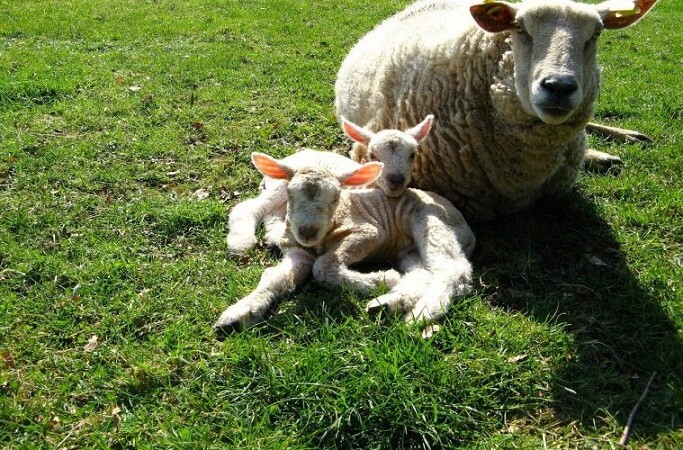

Lambing time brings its share of difficult births. Correct technique in assisting a ewe in difficulty will enhance ewe and lamb survival. If ewes are to be closely observed at lambing time it is advisable to move among them quietly, causing as little disturbance as possible, on a regular basis prior to the start of lambing.
Do not try to provide assistance before it is required. Normally, the interval between the start of active straining and the birth of the lamb is one hour. If assistance is given too early the ewe’s cervix may not be fully dilated and damage may result if the lamb is forcibly extracted.
The minimum kit used to assist a ewe includes clean water, soap, lubricant, three pieces of thin cord half a metre long that can be boiled between cases. An aluminium shepherd’s crook is especially useful for catching ewes.
If a ewe requires assistance, remember the following points:
Cleanliness: Cleanliness is essential to prevent the introduction of infection into the reproductive tract. Use a mild soap or disinfectant to wash your hands, arms and the vulva of the ewe.
Lubrication: The use of a lubricant, such as bland soap and water or obstetrical lubricant, is necessary if a hand has to be put into the ewe to deliver the lamb. Lubricant poured into the vagina will make manipulation and delivery easier, especially if the fluids surrounding the lamb have been lost or the lamb is dead and decomposing.
Be gentle: The ewe should be handled quietly. The best midwives for ewes with difficulty in lambing are frequently the female members of the family, they generally have smaller hands.
Check the presentation: Investigate the presentation of the lamb in a systematic manner. Do not attempt to pull the lamb unless it is upright with both forelegs coming first and its head lying over its knees or is upright with two hind limbs and tail presented. If the head and legs are not in the normal positions they can often be gently moved into place. Do not pull the lamb until it is positioned correctly.
Whenever manipulating the lamb inside the ewe, keep in mind that sharp projections, such as the teeth of the lamb, can easily tear the soft tissues of the uterus and vagina. Cover these projections with your hand if they need to be moved inside the ewe. A lot can be gained by gently pushing the lamb back into the uterus. This gives you more room to determine the presentation of the lamb and to apply cords for traction.
Once a lamb dies inside a ewe, the lamb swells and lubricating fluid is lost, making the uterus even more susceptible to tearing. In cases like these, pour large volumes of lubricant into the lambing passage.
If the lamb is coming forward, traction should be applied at three points. A cord with a running noose applied to each foreleg above the fetlock and a third cord with a running noose should be placed behind both ears and between the jaws. Do not place the noose on the lower jaw.
Traction should be applied steadily, not jerkily. Pull one forelimb slightly ahead of the other. This decreases the effective diameter of the lamb’s chest as it passes through the ewe’s pelvis.
The direction of pull is critical, once the head and legs are through the vulva, the pull should be directed towards the ewe’s hocks.
If the lamb’s hips become stuck in the ewe’s pelvis, do not pull, rotate the lamb’s hips 14 degrees from the vertical and pull in the direction of the ewe’s hocks.
 Contact Jaguza Support
Contact Jaguza Support